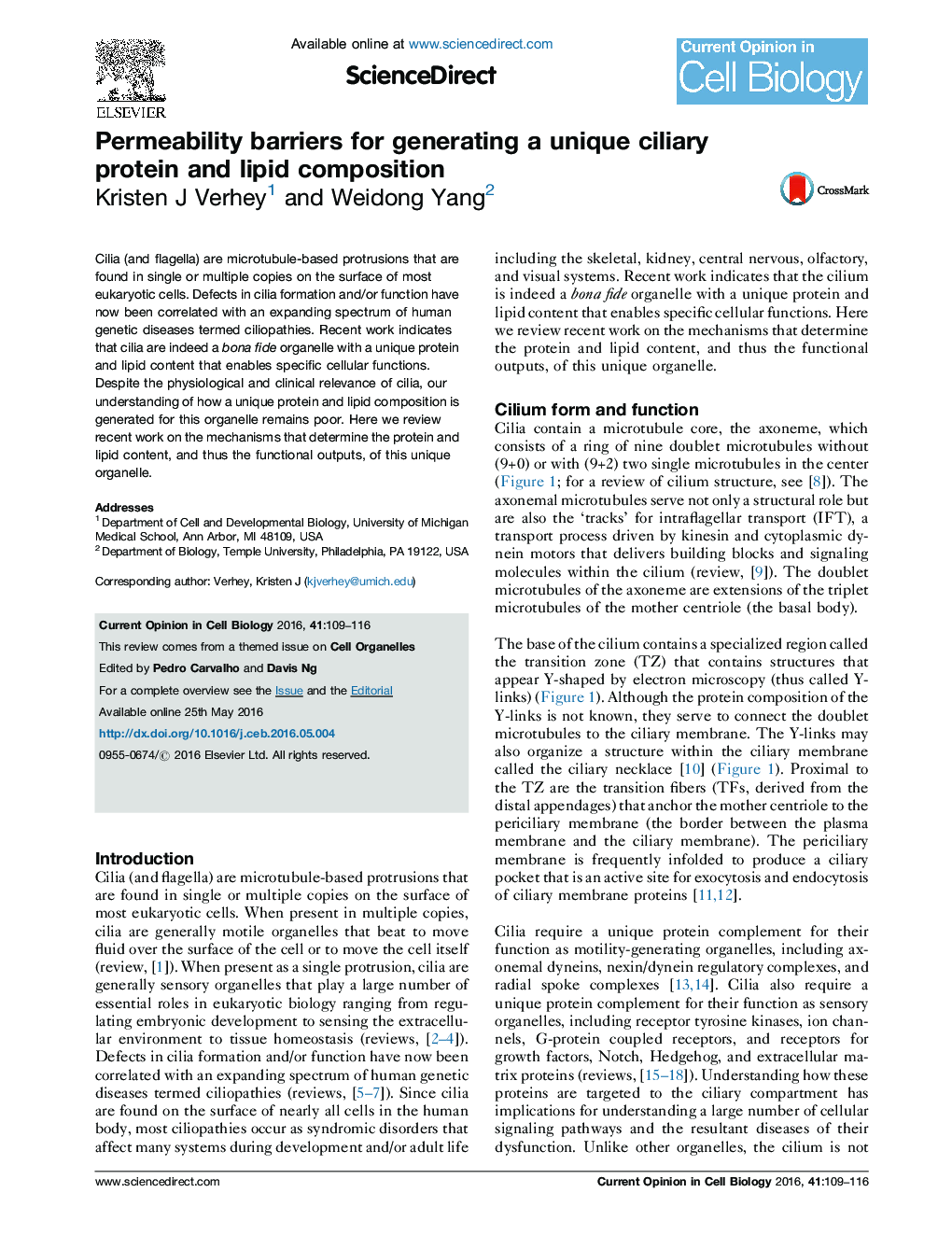| Article ID | Journal | Published Year | Pages | File Type |
|---|---|---|---|---|
| 2169679 | Current Opinion in Cell Biology | 2016 | 8 Pages |
•Nucleoporins comprise a permeability barrier for the entry of soluble proteins.•MKS proteins regulate the entry of membrane proteins at the transition zone.•NPHP proteins are structural components of the transition zone and regulate protein entry.•The inositol 5-phosphatase INPP5E creates a PI(4)P environment in the cilium.•Extraciliary PI(4,5)P2 may regulate exocytosis and endocytosis adjacent to the cilium.
Cilia (and flagella) are microtubule-based protrusions that are found in single or multiple copies on the surface of most eukaryotic cells. Defects in cilia formation and/or function have now been correlated with an expanding spectrum of human genetic diseases termed ciliopathies. Recent work indicates that cilia are indeed a bona fide organelle with a unique protein and lipid content that enables specific cellular functions. Despite the physiological and clinical relevance of cilia, our understanding of how a unique protein and lipid composition is generated for this organelle remains poor. Here we review recent work on the mechanisms that determine the protein and lipid content, and thus the functional outputs, of this unique organelle.
Graphical abstractFigure optionsDownload full-size imageDownload high-quality image (120 K)Download as PowerPoint slide
